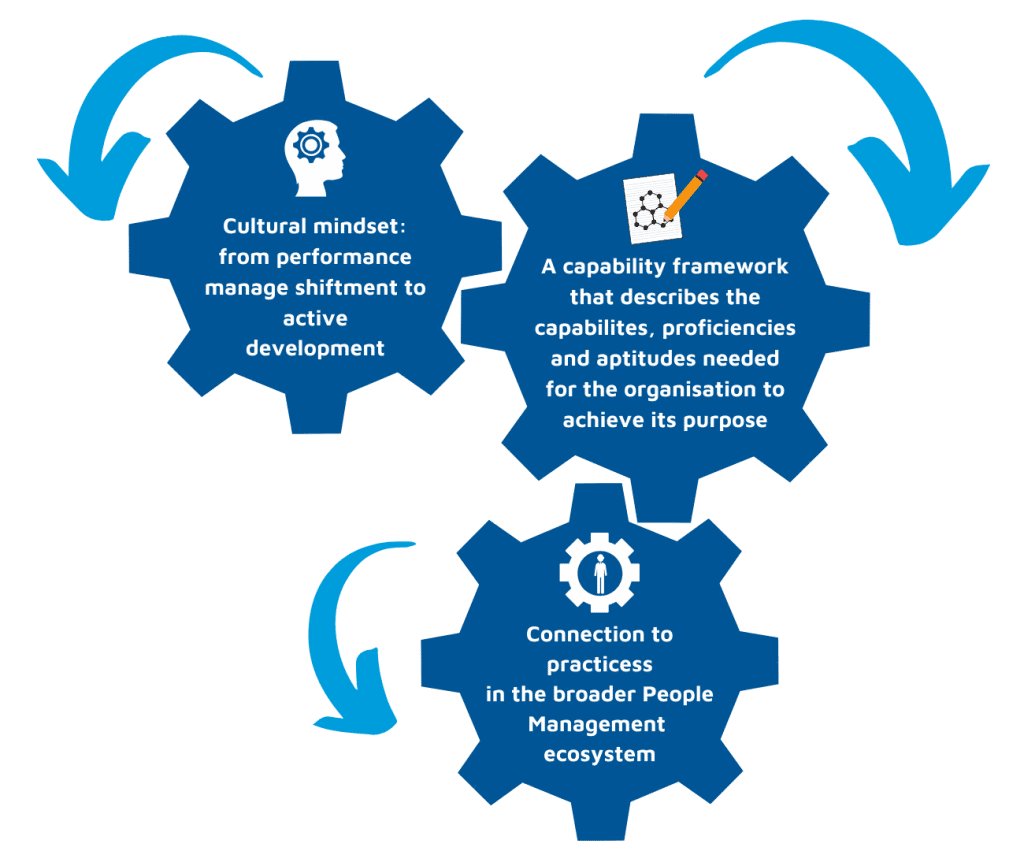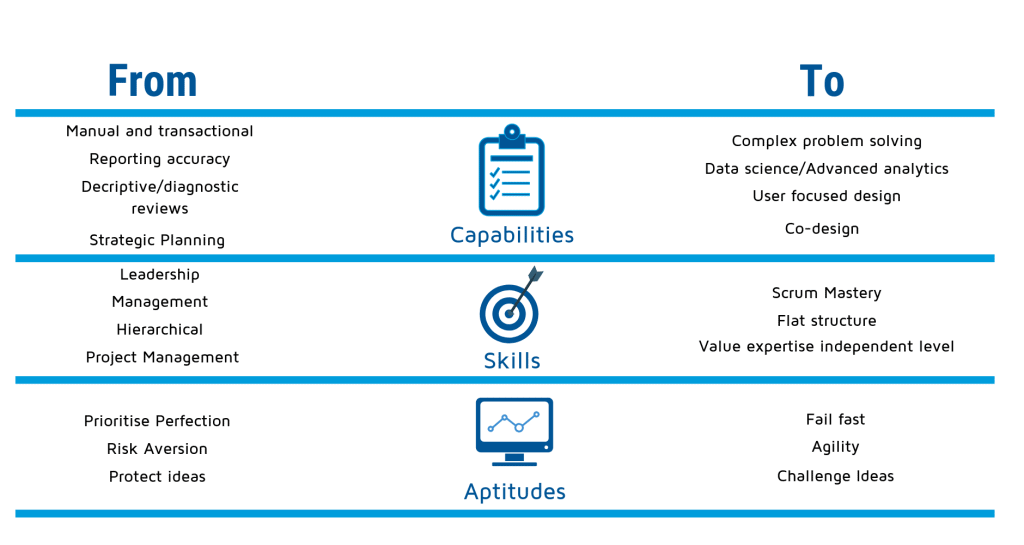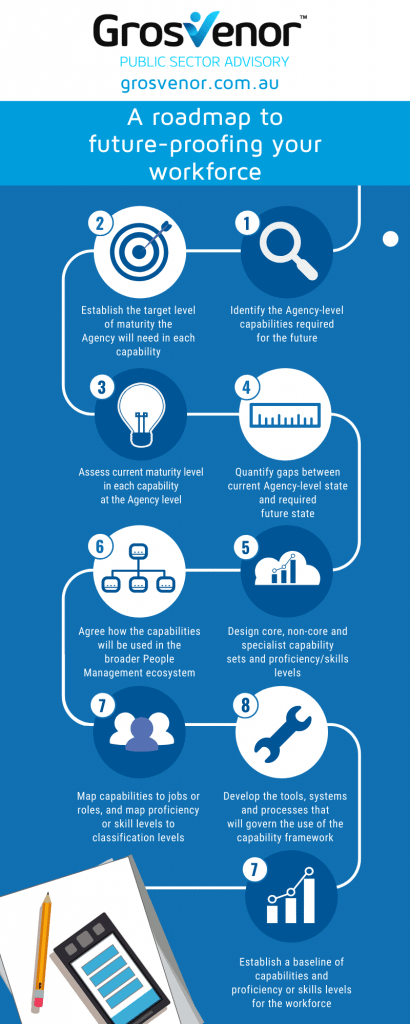Are you prepared for the workforce of the future?

“Tracking, monitoring and managing the skills and capabilities of the workforce can be problematic, especially with a view to positioning the workforce for the nature and types of future work.”
Do any of the five statements below sound familiar to you? If so, you are not alone. Most organisations are grappling with these exact problems when trying to address the future of work.
A deep understanding of skills and capabilities
There is a lack of holistic view of:
- Existing skills and capabilities of staff that takes into consideration all previous roles
- Future skills and capabilities required to deliver on our future ambitions
Consistent data and definitions
There is no agreed data platform, data set or definition dictionary used consistently in relation to skills and capabilities.
Agreed organisational position about core and non-core roles
Core, non-core and critical roles in the current state and future state have not been agreed.
A single tool and source of truth for capturing and tracking skills
There is no single system or tool for capturing and tracking staff skills. Rather, multiple systems and tools are used in solution for different purposes.
A single framework for skills and capabilities
A number of frameworks are in use for tracking qualifications, skills, experience, professional accreditations, education and training across the agency, and they do no interact with one another.
Creating the right future-proofing environment
Three key elements need to work in concert with one another to ensure people capability frameworks are reflective of both the current and future states, and are embedded, relevant and useful.

Current skills less relevant in the future state
Common models and frameworks for skills and capabilities do not include aptitudes, attitudes and proficiency levels.
This is likely to be the primary differentiator between agencies that manage the workforce strategically, and those that manage reactively.
The future of work studies reveal approximately 30 per cent of jobs we will be doing in 5-years’s time, have not been designed, and that 90 per cent of students in infant school will be doing jobs as adults we have not even imagined yet.
For the public sector, that means taking immediate steps to build aptitudes for new ways of working, and shifting workforce capabilities to be future-ready:

A basic road map to future – proofing your workforce:








 We are all about sharing our expertise to help you and your organisation be the best it can be.
We are all about sharing our expertise to help you and your organisation be the best it can be.